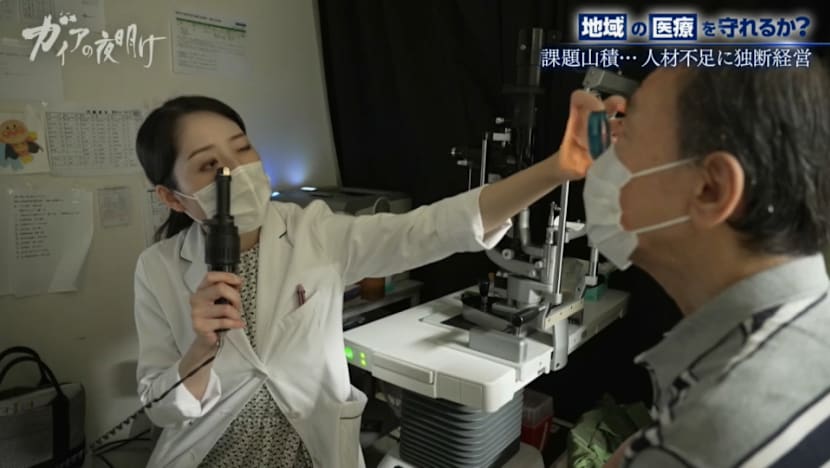Health
Tokyo Hospital Revives Community Trust After Crisis

In a remarkable turnaround, Shiseikai Daini Hospital in Setagaya, Tokyo, is rebuilding trust and restoring healthcare services after emerging from a crisis. Once a symbol of mismanagement, the hospital has begun to heal under new leadership and a dedicated team, many of whom are women committed to revitalising the institution.
The troubles began when Kinuko Iwamoto, the former chair of the board, was arrested for misappropriating over 100 million yen (approximately $910,000). Her aggressive cost-cutting measures resulted in drastic staff reductions, with the number of full-time doctors plummeting from 45 to just 27. Entire departments were closed, including the intensive care unit, which was repurposed into a storeroom due to an acute shortage of medical personnel. Emergency care services were left in the hands of a single physician, leading to heartbreaking decisions when patients needed urgent attention.
As public confidence waned, bed occupancy rates fell to a mere 30 percent, pushing the hospital into financial deficit. This situation reflected a broader trend across Japan, where a 2024 survey indicated that nearly 70 percent of hospitals were struggling financially due to rising costs and capped medical fees.
Taking the helm after Iwamoto’s departure, Reiko Saito inherited what she described as “a negative legacy.” Her immediate focus was on restoring the hospital’s reputation and operational integrity. “My first priority is to return it to zero. To bring it back to the starting line,” she stated, laying the groundwork for a new era of collaborative management. Regular forums were reintroduced, allowing nurses and doctors to voice their concerns openly. “We must work together as one team,” Saito emphasized.
Among the new hires is Ai Kuranami, a 32-year-old ophthalmologist and mother, who joined after the reopening of the hospital’s in-house nursery. This facility, once closed due to budget cuts, now operates at a cost of 2 million yen a month, primarily funded through reserves and corporate contributions. Kuranami remarked on the advantages of the nursery: “Since it’s in-house, I don’t need to drop him off elsewhere. It saves time and allows me to be close by.”
Despite still utilizing decades-old equipment, the hospital’s financial recovery under Saito’s leadership has enabled significant investments in modern medical technology. A new surgical microscope was acquired for over 15 million yen, alongside a modern visual field tester costing 7.5 million yen. Kuranami noted the impact of these upgrades on her practice. “It makes surgery easier and raises our motivation,” she explained.
Another key figure in the hospital’s resurgence is Dr Norio Yoshimoto, the head of the Foot Surgery Centre. Once underappreciated, he now enjoys a salary that reflects his contributions, having seen a substantial increase since the crisis. His annual surgeries have surged from 180 to over 300, attracting patients from abroad, including Rini from Indonesia, who praised his expertise.
While the hospital has successfully added four new doctors, bringing the total to 31, there remains an urgent need for specialists in internal medicine. One administrator highlighted the necessity for at least three more doctors to meet patient demand. In contrast, nursing staff have flourished, with a full class of new graduates from the adjacent Shiseikai Nursing School joining the team. “We ease patients’ pain and spend the most time with them. I want to be a source of support,” one new nurse commented.
The obstetrics department, once forced to shut down for a year due to staffing shortages, is also on the mend thanks to the arrival of Dr Naoko Fukuda. A specialist in emergency and intensive care, Dr Fukuda was recruited through an open hiring process, moving away from the previous reliance on university-affiliated doctors. Her approach has been instrumental in reviving the obstetrics unit, where she recently assisted a Tanzanian woman named Lulu through a successful Caesarean section.
Reflecting on the hospital’s mission, Tetsuji Tanaka, a narrator at the hospital, echoed a sentiment from Edo-era pharmacologist Ekiken Kaibara: “Medicine exists for people.” He emphasized the importance of compassion in healthcare delivery.
As Shiseikai Daini Hospital continues to recover, Chair Reiko Saito remains optimistic. “How do we defend local healthcare?” she asks. “A hospital that’s easy for people to come to and also provides good working conditions for our staff will ultimately affect our patients positively. That’s our goal.” The steps taken thus far signal a promising future for the hospital and the community it serves.
-

 Business5 months ago
Business5 months agoKenvue Dismisses CEO Thibaut Mongon as Strategic Review Advances
-

 Lifestyle4 months ago
Lifestyle4 months agoHumanism Camp Engages 250 Youths in Summer Fest 2025
-

 Sports4 months ago
Sports4 months agoDe Minaur Triumphs at Washington Open After Thrilling Comeback
-

 Sports5 months ago
Sports5 months agoTupou and Daugunu Join First Nations Squad for Lions Clash
-

 Top Stories5 months ago
Top Stories5 months agoColombian Senator Miguel Uribe Shows Signs of Recovery After Attack
-

 World5 months ago
World5 months agoASEAN Gears Up for Historic Joint Meeting of Foreign and Economic Ministers
-

 Health4 months ago
Health4 months agoNew Study Challenges Assumptions About Aging and Inflammation
-

 Business5 months ago
Business5 months agoOil Prices Surge Following New EU Sanctions on Russia
-

 Entertainment4 months ago
Entertainment4 months agoDetaşe-Sabah Violin Ensemble Captivates at Gabala Music Festival
-

 Entertainment4 months ago
Entertainment4 months agoBaku Metro Extends Hours for Justin Timberlake Concert
-

 Top Stories5 months ago
Top Stories5 months agoRethinking Singapore’s F&B Regulations Amid Business Closures
-

 Business5 months ago
Business5 months agoU.S. House Approves Stablecoin Bill, Sends to Trump for Signature









